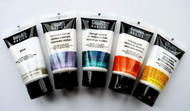How To Use Liquitex Acrylic Painting Mediums
Posted by Cass Art on 1st Jan 2019
Artist Lucy Wintle shares her knowledge and shows us the wonderful things you can achieve with Liquitex Acrylic Mediums! Here she offers advice on everything from Gesso to Gels, Iridescence to Texture the perfect tips to get you started with this dynamic material.
Acrylics are an extremely versatile paint and using mediums only increases this versatility: as they change the behaviour and appearance of the paint. Some extend the drying time and improve flow, others increase transparency or opaqueness, and they can also provide textural effects and alter the finish. There are loads of mediums out there and I encourage you to try them, but for this article im going to focus on Liquitex’s Basic Acrylic medium set to get you started.
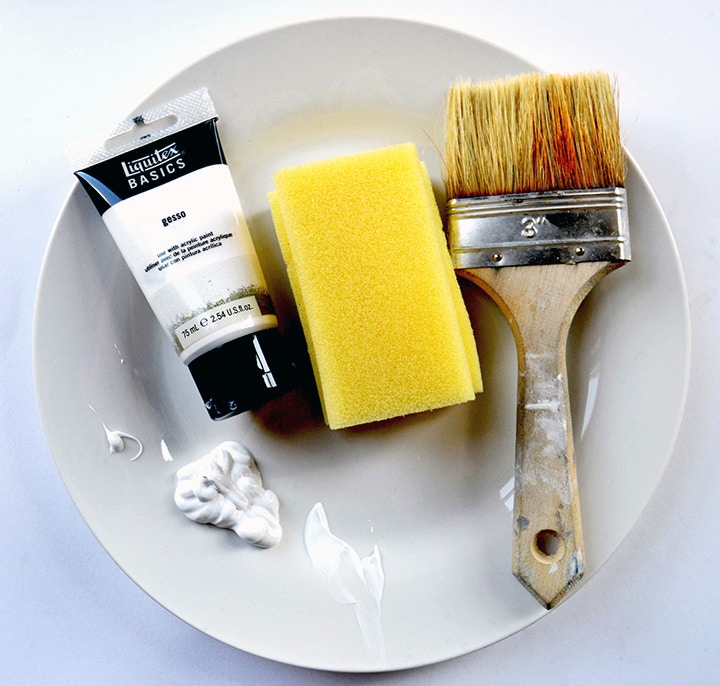
Gesso
Gesso is a primer and is used to prepare the painting surface, sealing it to prevent the paint sinking and the colours becoming washed out it also provides tooth to help the paint adhere to the surface. You can turn all manner of materials into a painting surface by applying Gesso to them such as, canvas, wood, paper and metal. Most shop bought canvas’s come pre- primed with Gesso but it’s good to check the label before starting painting.
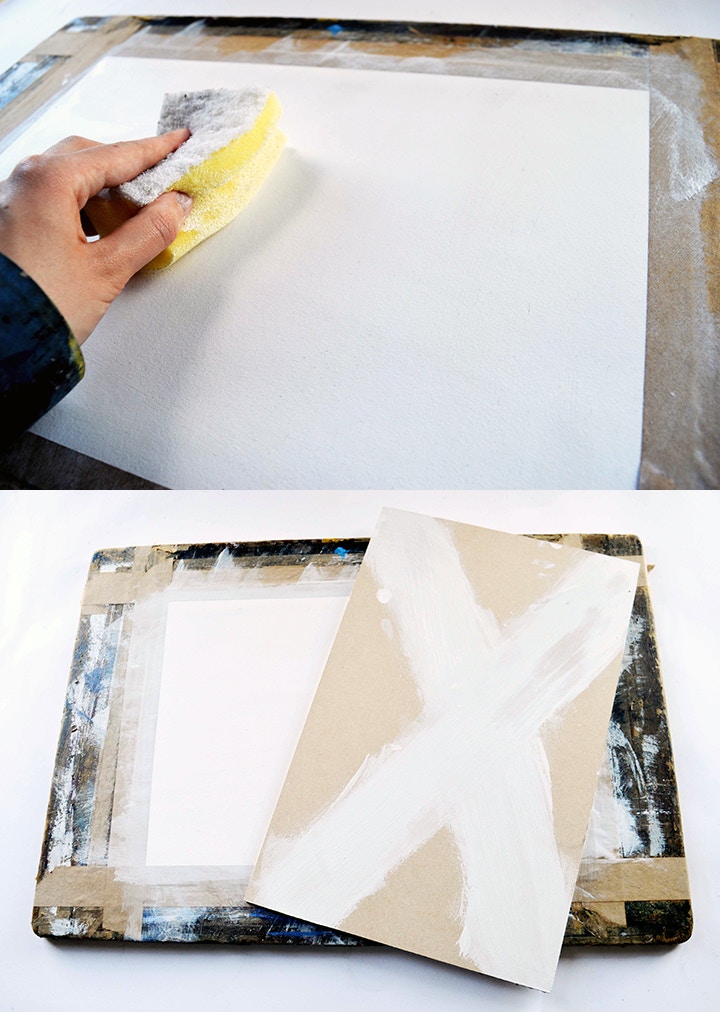
Top Tips for Gesso:
- Gesso can be applied using a brush or a sponge. For a smooth surface use a sponge or a big soft brush and for a textured surface use a coarse haired brush.
- For an extra smooth finish you can sand the Gesso down between layers.
- Different brands of Gesso will come in different consistencies. For a smooth finish water down thick Gesso until it is runny, then apply 2-3 even thin coats using a consistent brush stroke direction – but changing this direction for each subsequent layer.
- For a really rough texture you can apply the Gesso as thickly and liberally as you wish.
- It is important to let the Gesso dry properly between coats, you can speed this process up by using a hair drier.
- If you are painting on board you should paint a cross of Gesso on the back of the surface to help prevent the board from warping.
- You should also always stretch paper before applying Gesso.
- Gesso is usually white but you can tint it any colour you wish by adding acrylic paint to it.
Gloss Gel Medium
When Gloss Gel Medium is mixed with paint this medium will give a glossy sheen, which is very useful when painting reflective surfaces such as water. It is also transparent so it can be applied over the top of dry paint to the same effect. When mixed with the paint it thickens it, resulting in increased brush stroke retention, and can generally be used to create more texture due to the stiff nature of the paint.
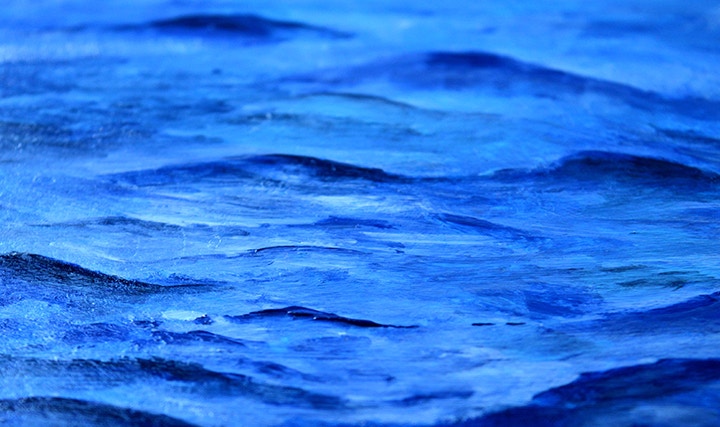
Iridescent Medium
Iridescent medium can either be mixed in with the paint or applied on top. It provides a pearlescent sheen and you can control the degree of this effect by how much you mix into the paint or by watering it down when applying it on top. It’s great for painting soft silky fabrics, starry night skies, shimmering water and metals. It does change the colour of the paint, making it slightly silvery – so make sure you keep this in mind!
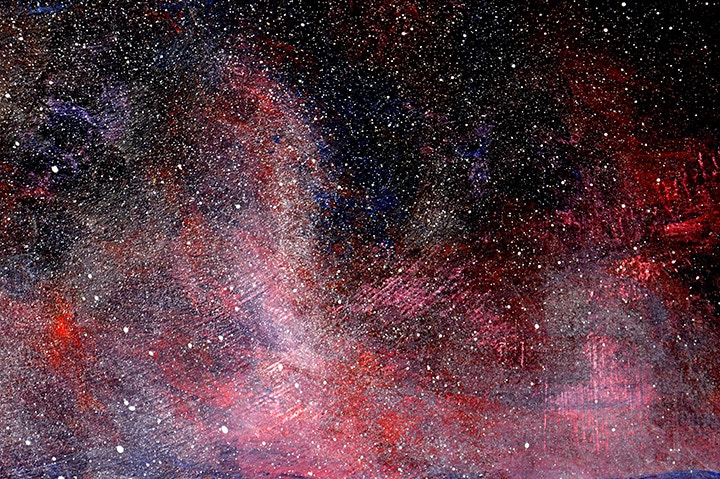
Modelling Paste
Modelling Paste is thick and opaque; you can use it on its own to create textures and build it up in layers to add 3D elements to your painting. You can even score into it and make shapes whilst it’s wet or change the shape after it’s dry by sanding it. Additionally, it can be mixed directly into the paint. It’s great for natural textures such as bark, rocks and waves.
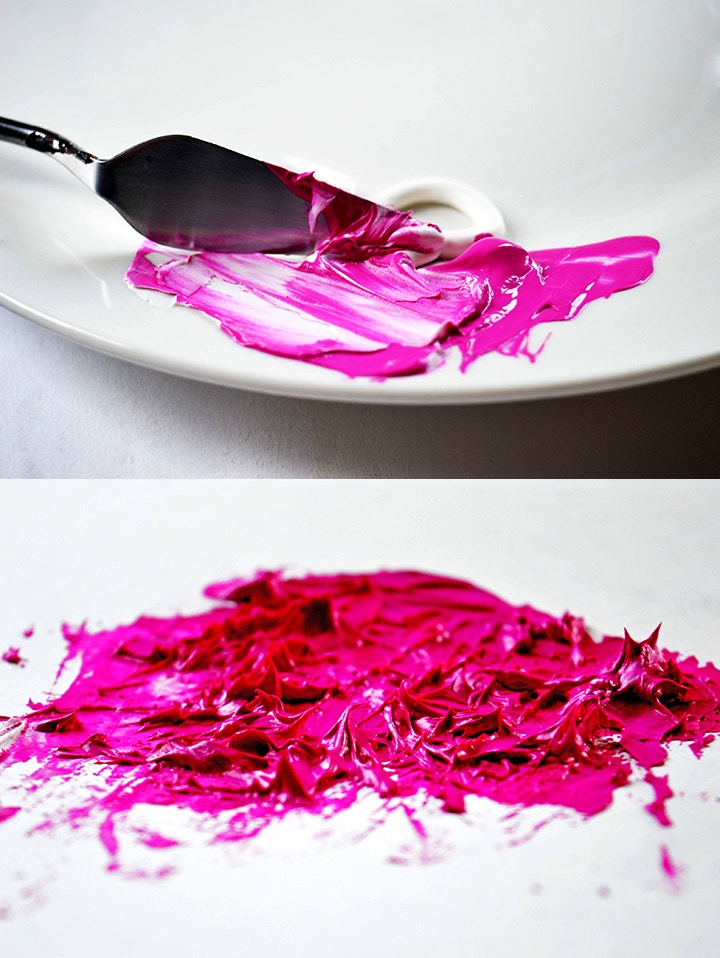
Coarse Texture Gel
Coarse Texture Gel is basically sand for paint. It can be applied to the painting surface directly or mixed in with the paint, the density of the texture can be controlled by how thickly you apply it and the proportion added to the paint. it dries to a gravelly sand like texture. This is great for rocks, beaches, gravely roads and rust.
More than one medium can be mixed into the paint to achieve multiple affects at once, for instance to create a choppy sea scape you could add modelling past and gloss gel into the paint to achieve texture and shine. However, keep in mind that adding mediums to your paint thins them - which can make then appear washed out if over used. There isn’t an exact amount of medium to paint ratio, just play around and see what works for the effect you are trying to achieve. It is also helpful to use graduate quality acrylics when using a lot of mediums as they have a higher pigment content than student grade, and as such can be mixed further without degrading the quality of the colour.
Feeling Inspired?
Try out your own experiments with the Liquitex Basics Acrylic Mediums Set, use hastag #cassart on social media to show us your artwork!

